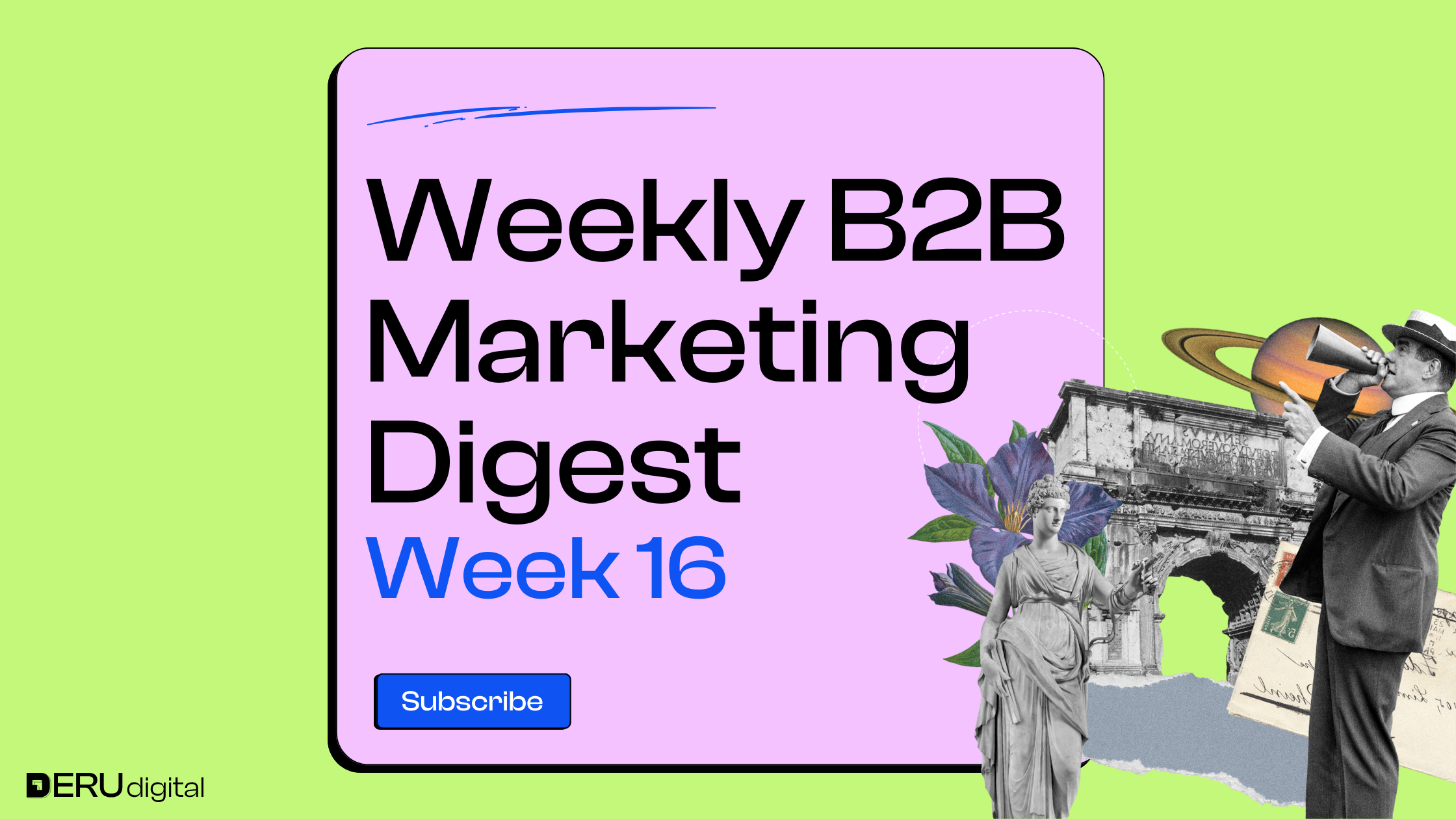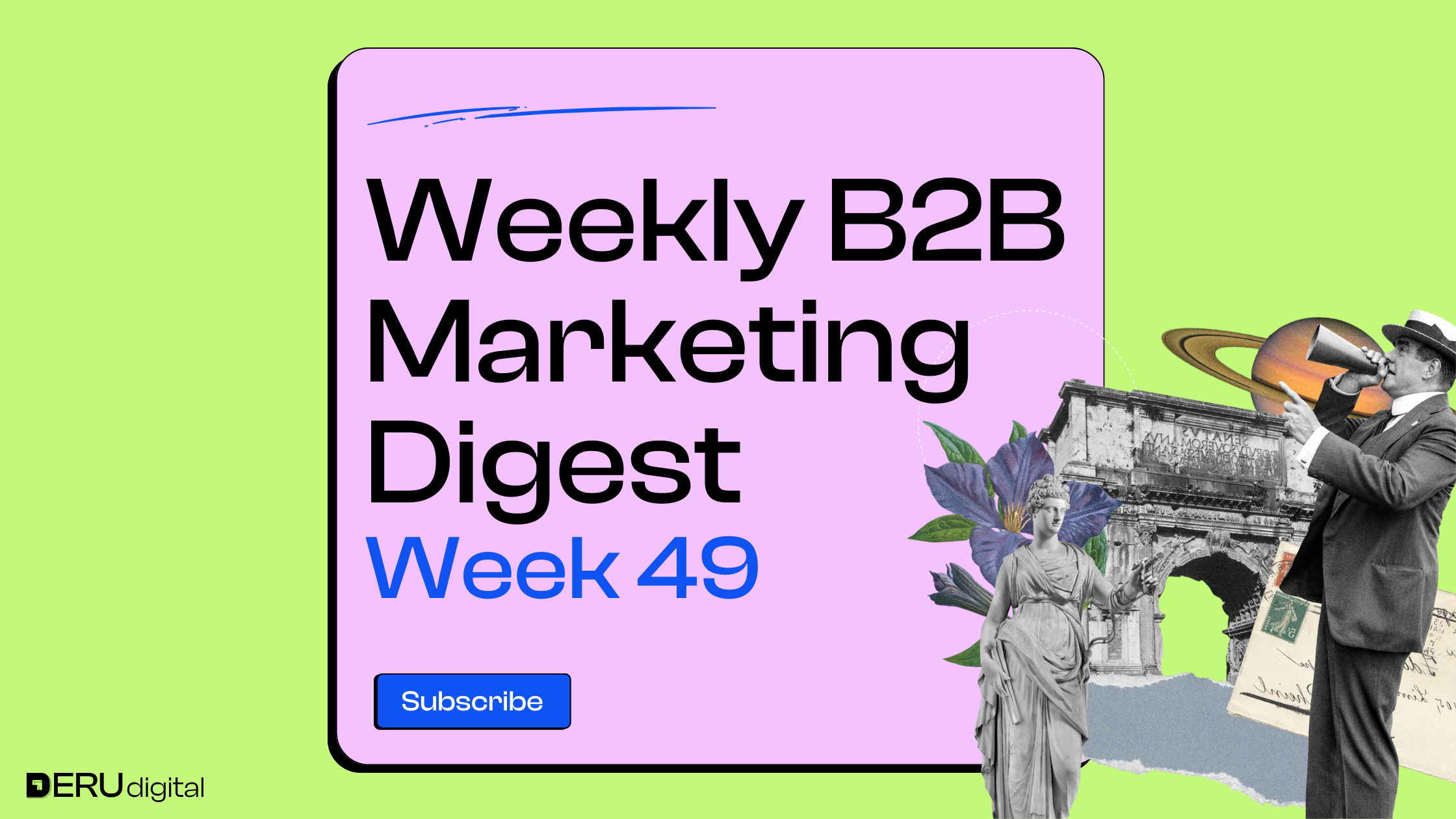
INSIGHTS FROM EXPERTS ON LINKEDIN
Mike Ryan shares that Temu abruptly turned off its U.S. Google Shopping ads on April 9, and within days, its App Store ranking plummeted from a top 5 spot to 58. The drop shows just how much Temu relies on paid ads to fuel growth — without them, installs dried up almost instantly. Tariffs and tighter import rules may have forced the move, and while this could lower ad costs temporarily, the bigger impact on ecommerce could hit small businesses hardest.
Chris Kubby says most people are barely tapping into what the latest ChatGPT can do. He’s been training his own custom GPT with content, visuals, and even personal brand assets to create full AI-generated carousels – all tailored to him. This kind of setup isn’t just fun, it’s powerful – and he’s encouraging others to stop playing small and start building smarter with AI.
Robert Kaminski 🎯 explains why marketing directly to ultimate decision-makers is a losing game for startups. These execs are busy and won’t bother with your homepage or product video – they rely on trusted team leads to do the research and bring them options. If you want to win deals, focus on the people closest to the problem – they’re the ones who’ll champion your product internally.

Julia Kinner says most growth problems don’t come from your campaigns – they’re rooted in strategy, pricing, analytics, and product issues that often go ignored. She’s mapped out 16 foundational barriers she regularly sees in client work, and they’re not the easy fixes. If your growth feels stuck, it might be time to look below the surface.

Simone Engbo Hansen breaks down why LinkedIn has quietly become the go-to platform for creators and B2B brands. With massive growth in content sharing, newsletters, and video, it’s no longer just a job board – it’s where professional influence is built. If you’re not investing in original insights, internal voices, and video-first content, you’re falling behind.
Jess Cook shares the secret sauce behind Vector’s top-performing LinkedIn ad – a clever hook, sharp headline, real product visuals, and their charming mascot Ghosty. But the real magic? They used their own tool to target high-intent leads, giving the ad a head start. It’s a great example of B2B ads that actually feel fun, useful, and human.

Petra Karlsson shares how she approaches LinkedIn across the full funnel at Oneflow – not just for reach, but to drive meaningful impact. She tracks things like engagement, audience quality, influenced pipeline, and even ARR. It’s not about chasing a single number. It’s about using the data to ask better questions, refine targeting, and make sure sales and marketing are aligned on what matters.
Justyna Ciecierska, MSc challenges the idea that more content means more demand. She points out that if people don’t remember your brand when it’s time to buy, it doesn’t matter how many impressions you’ve made. Her advice? Focus on repetition, emotional storytelling, and simple, distinct messaging that sticks. Otherwise, you’re just running content with no real outcome.

Andrei Zinkevich lays out what usually passes as “strategy” in B2B – gated content, AI blogs, outreach automation – and explains why it often leads to low conversions and missed targets. What’s missing is a real GTM plan: clear goals, a defined ICP, deep buyer research, strong positioning, and full-funnel programs. Without those pieces, even the best execution won’t move the needle.

Emma Colson makes a case for thought leadership as one of the most effective (and human) ways to stand out on LinkedIn. The best posts, she says, don’t try to impress – they aim to teach, reflect, and connect. It’s about showing your thinking, not just your wins. And when done well, it’s a lightweight but powerful way to tie your brand to real stories and real people.
WHAT'S NEW IN THE INDUSTRY
Business leaders are feeling more pressure than ever to be data-driven, but many say they still struggle to access, trust, or act on data effectively. Salesforce’s new AI-powered Tableau Next aims to fix that by automating data prep, surfacing insights, and answering natural language questions right in the tools people already use. The new offering is part of Salesforce’s broader push into AI agents designed to bridge the gap between data and decision-making.
Google is under fire for urging small businesses to oppose California’s AB 566, a privacy bill that would make it easier for users to opt out of data collection. Advertisers and marketers are speaking out, saying Google’s stance undermines consumer trust and promotes misinformation. The backlash reflects growing industry frustration with how big platforms handle privacy and consent.


Google Ads is emailing advertisers with “personalized” three-month growth plans promoting AI features like broad match, Performance Max, and ad strength improvements. While framed as helpful guidance, the suggestions largely align with Google’s automated ad strategy and may benefit the platform more than advertisers. As more accounts follow these playbooks, those who don’t may risk falling behind in performance.

Apple has dropped “Search” from its ad platform name, now calling it Apple Ads, to reflect placements beyond App Store search results. Ads now appear in spots like the Today tab and app pages, with possible expansion into Maps or News. The move hints at Apple’s growing interest in the wider digital ad market as it leans more on services revenue.
Google’s latest Ads Safety Report shows how AI is transforming ad enforcement, catching scams earlier and suspending a record number of advertisers. The company says its AI now catches 97% of violations, but critics point to unclear policies that leave legit advertisers vulnerable. With scams rising and elections looming, Google is doubling down on automation to keep its ad ecosystem clean.
Temu pulled all U.S. Google Shopping ads on April 9, and its App Store rank nosedived from #3 to #58 in days. The sudden drop reveals just how dependent the company was on paid acquisition, and how tariffs may be forcing a broader rethink of its U.S. strategy.

A new class action suit in the UK accuses Google of inflating ad prices by abusing its dominance in search. The case could impact hundreds of thousands of businesses forced to rely on Google Ads, with claims dating back to 2011. If successful, it may shake up ad pricing and open the door to more competition.
Even big names like Google Cloud were correctly identified by just half of respondents. For smaller brands, it’s worse – many get mistaken for competitors. Want to fix that? It takes more than a logo. Learn how to build a stronger, more memorable B2B brand.

Google Analytics 4 now offers clearer reports, better fallback tracking, and early alerts when things go wrong. The updates aim to keep data accurate even as privacy restrictions grow, helping marketers act faster and fix issues before they cause bigger problems. It’s a win for better insights without sacrificing user privacy.
Version 19.1 of the Google Ads API adds more control for Demand Gen campaigns, better demographic data for video ads, and improved lead feedback for Local Services. Advertisers can also fine-tune Shopping ads in Performance Max. It’s a low-effort upgrade with high-impact targeting and measurement improvements.
That’s the scoop for this week! If you found this valuable and any useful insights caught your eye, feel free to share them with your network.
Until next week!



